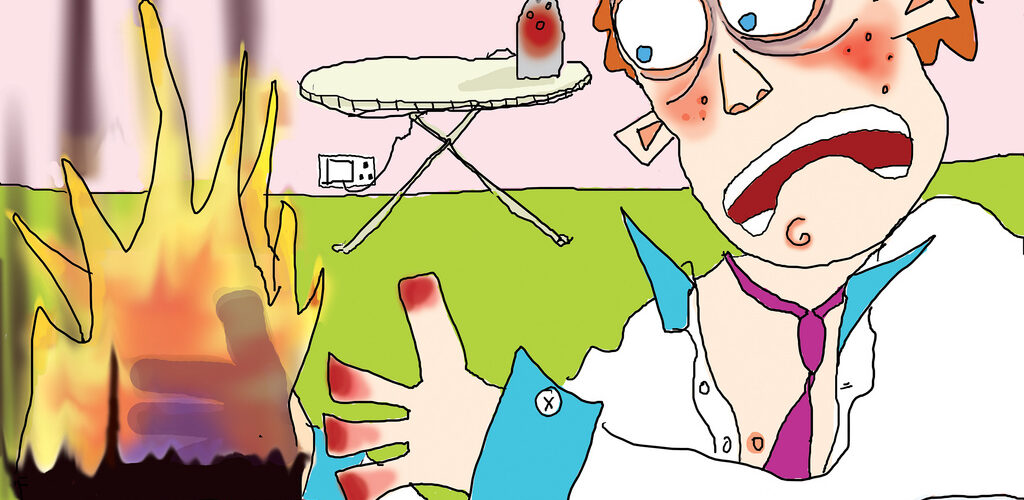Why You Shouldn’t Burn Your Toast

It’s Monday morning again, your alarm is going off and, yes, that is most definitely rain you can hear battering off the window. You realise that you’ve slept in, and, in your rush not to be late, you run downstairs and shove some bread into the toaster, running away to brush your teeth, pack a bag, find your bus pass… Quickly forgetting your rapidly toasting bread.
When you do finally remember about your toast, it’s black. Charcoal. In too much of a hurry to care, you gobble it down anyway on your way out the door. It’s happened a thousand times, to you and many others. What nobody has time to consider at this time in the morning is whether or not burnt toast is actually bad for you.
The Science of Cooking
Whether you’re cooking meat, toasting bread or roasting coffee, you’re performing a particular chemical reaction – the Maillard reaction. This process, named for the French chemist who studied it, is the reaction between amino acids and reducing sugars in the presence of heat.
Chemically speaking, the carbonyl group of our reducing sugar (a sugar which can readily give away some of its electrons to other molecules) reacts with the amino group of an amino acid, producing a molecule known as an N-substituted glycosylamine. This reaction series continues fairly freely and can result in the formation of thousands of different molecules, including melanoidins (responsible for the brown colour of cooking food), and furans, (molecules that produce the meaty flavour in our foods).
The Maillard reaction does not begin until above 140 °C, and, until the reaction begins to take place, the distinct flavours we associate with foods like meat cannot be released.
The flavours of foods are a result of many factors including the composition of sugars and amino acids present, the cooking time and temperature, and the pH of the cooking environment. This Maillard reaction forms the foundation of the flavour industry as by tweaking the reaction conditions it is possible to create a vast array of different flavours.
Dinner is ready when the smoke alarm goes off
What happens though when food is left in the oven for too long, and at too high a temperature? The Maillard reaction continues optimally between 140 and 165°C but above these temperatures, other reactions such as pyrolysis become more prominent.
Pyrolysis, from the Greek meaning ‘to break with fire’, involves the breakdown of complex molecules into smaller fragments using heat alone. As the temperature of cooking food rises above 165°C, the surface of the food dries out and it begins to burn. Under normal circumstances, it is the carbohydrates and protein present that begins to burn, but fats may also burn depending on the type of cooking as well as the temperature of the food.
You may wonder why this is a problem. Your food is hot, any nasty bacteria that may have been present have been destroyed and you like your food crispy, anyway. Whilst this is all true (your food crispness preferences dependent), this is a problem because potentially toxic by-products can form on the surface of the food with overcooking, some of which may be carcinogenic.
Crispy Chemicals
A few of these toxic by-products are highlighted as being of particular concern should we take to eating copious amounts of them. Examples include acrylamide, heterocyclic amines and polycyclic aromatic hydrocarbons. The International Agency for Research in Cancer (IARC) provides a sliding scale rating the carcinogenicity of chemicals (the likeliness of a particular chemical to cause cancer). A group 1 classification depicts a chemical that is a carcinogen, whereas a group 4 substance would not be considered carcinogenic. Acrylamide is ranked in group 2A by the IARC meaning they consider it as probably carcinogenic to humans.
However, despite this ranking, there has been no conclusive research to suggest that acrylamide exposure in food is absolutely carcinogenic1. So far, scientists’ best guesses are a result of studies involving experimenting on animals, which have found exposure to acrylamide can cause tumours to develop in the lungs and thyroid, amongst other sites. Whilst animal models are important in understanding disease mechanisms in humans, they cannot always be taken at face value as the human body is significantly more complicated than that of a mouse, for example.
Pyrolysis of certain amino acids can produce mutagenic products such as PhIP, a heterocyclic amine. PhIP is considered a group 2B carcinogen by IARC standards, meaning it is possibly carcinogenic with experimental studies finding it may cause chromosomal abnormalities in humans. Interestingly, a study conducted by the Lawrence Livermore National Laboratory and the UC Davis Cancer Centre in California found that African-American men consume twice as much PhIP as white men. This increased PhIP intake correlated with elevated levels of prostate-specific antigen in the blood, a marker for prostate cancer. The authors of the study believe that the increased concentrations of PhIP may go some way to explaining why two African-American men die as a result of prostate cancer for every white man2.
Benzo[a]pyrene, a group 1 carcinogen, is thought to be the most potent of the polycyclic aromatic hydrocarbons found in food.Benzo[a]pyrene is formed at very high temperatures (above 300 °C) and is thought to be a particular risk when barbecuing food until it is well done. Metabolic products of benzo[a]pyrene bind to DNA that can produce mutations that may result in tumour formation 3.
Should we really be worried?
The short answer is no – no more than usual, that is. The chemicals listed above are found in food in very low concentrations (parts per billion). Despite this, the European Union believes it prudent to recommend that people attempt to refrain from eating burnt foodstuffs due to concerns surrounding the levels of acrylamide present.
However, it should be noted that more research in this area is required. Epidemiological studies 4 often inform the opinion of policy-makers, and, whilst important for public health, such studies can often arrive at conflicting conclusions leading to a confused and distrusting public. Laboratory studies, on the other hand, have found that these chemicals can cause cancer in animal models, but only at concentrations that would require eating industrial quantities of burnt toast daily to be at risk.
The formation of tumours is a stochastic process, that is to say with all the evidence we may think we have, we can’t actually ever predict with certainty when a tumour might appear, never mind asking where in your body and why!
So, when Monday morning rolls around again, don’t waste your time worrying whether or not your burnt toast is bad for you. Just get on with it, at least until the science says otherwise!
This article was specialist edited by Debbie Nicol and copy edited by Kim Wood
References
- Pelucchi C, Galeone C, Levi F, et al. Dietary acrylamide and human cancer.International Journal of Cancer 2006; 118(2):467–471
- http://cancerres.aacrjournals.org/content/65/9_Supplement/1366.2?cited-by=yes&legid=canres;65/9_Supplement/1366-a
- http://mutage.oxfordjournals.org/content/13/6/537.full.pdf
- If you want to learn more about epidemiology, read this: http://www.bmj.com/about-bmj/resources-readers/publications/epidemiology-uninitiated/1-what-epidemiology










